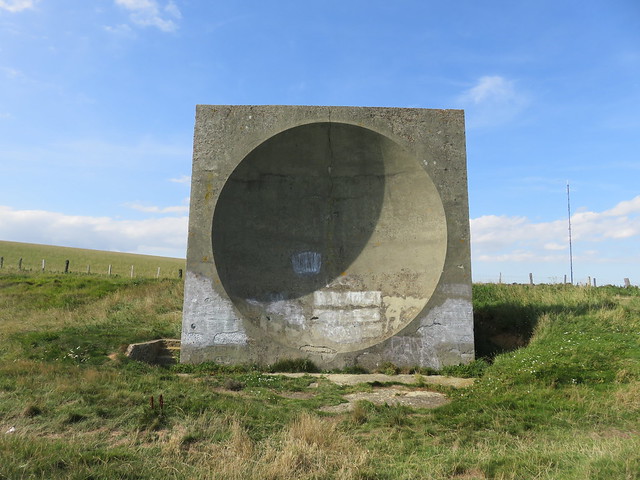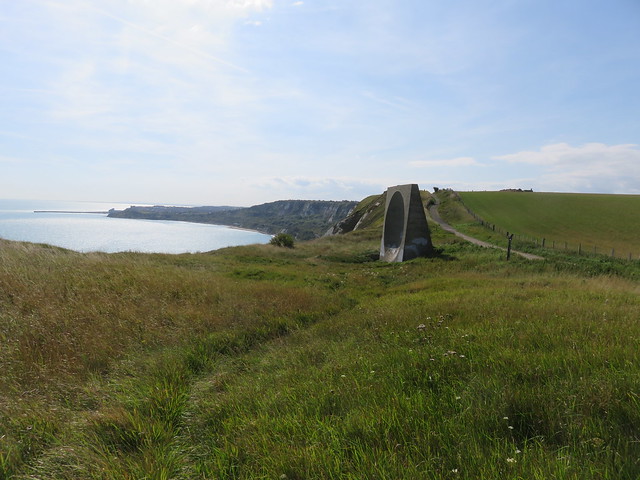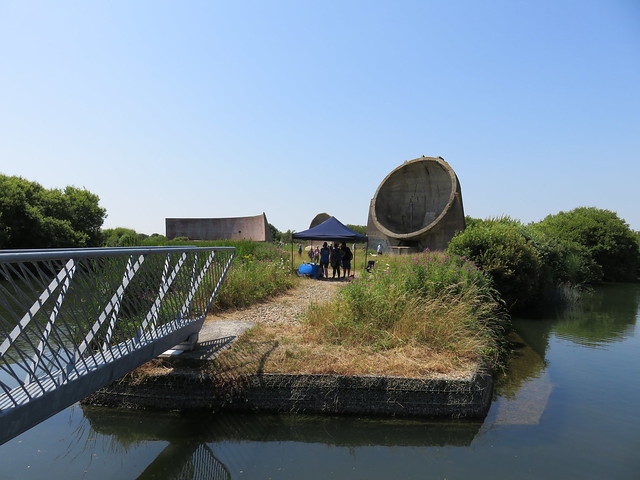Recording at a Sound Mirror in North East England. Massive concrete structures used as primitive aircrafts detection.#photography by me pic.twitter.com/gbBSu1y2kN
— Chris Egon Searle (@ChrisEgonSearle) January 12, 2018
Author: Andrew Grantham
Boulby sound mirror photo
Here's a shot taken of Boulby Sound Mirror, theres few more on over on instagram https://t.co/IRk69ewc62 @BrutalHouse @modernistsoc @OfficeOfCraig #howleighspenthisbirthday! pic.twitter.com/4xMu7Yi2IO
— photographbyanderson (@isyandleigh) January 8, 2018
Sound mirrors one of “12 intriguing places listed by Historic England in 2017”
The National Heritage List for England identifies the buildings, sites and landscapes which receive special protection.
Explore 12 new additions on @googlearts https://t.co/EhLddvkMMP pic.twitter.com/hXMVHsZbWj
— Historic England (@HistoricEngland) December 19, 2017
Accoustic Mirrors, Fan Bay, St Margaret’s at Cliffe, Kent
The threat of aerial warfare in the 20th century provoked new systems of strategic air defence. Acoustic mirrors reflected the sound of distant aircraft onto a focal point where it was detected. The examples at Fan Bay are unusual as they are carved from the cliff face. The eastern mirror is one of the earliest, dating from about 1916. A second mirror dates from the early 1920s. The development of radar in the 1930s rendered sound mirrors obsolete. (Scheduled Monument. List Entry Number: 1442235)
Source: 12 intriguing places listed by Historic England in 2017
The science of anti-aircraft gunnery in World War I
There is a mention of sound mirrors in the article Mirrors and smoke: A. V. Hill, his Brigands, and the science of anti-aircraft gunnery in World War I, William Van der Kloot. DOI: 10.1098/rsnr.2010.0090 Published 20 July 2011.
North Downs Way sound mirror
Another visit to the Abbot’s Cliff sound mirror, while walking the North Downs Way long distance footpath.
Abbot’s Cliff sound mirror art review
Abbot’s Cliff Sound Mirror – Strait of Dover is a picture of a “sound mirror” built during the World War II era for the purpose of amplifying the noise of approaching aircraft. […] Beam’s camera translates light and shadow into a negative, and then a print, the sound mirror takes what is unheard out of thin air and translates it to something we can hear. The old Zen question about the tree falling in the woods is meditative, but it is also scientific: If there is no one around to hear it, it definitively does not make a sound. Similarly, if there is no eye, there is no image.
The effectiveness of Beam’s pursuit is deepened by Section of Abbot’s Cliff Sound Mirror, prints made from charcoal rubbings of the stone mirror itself. […]
Source: “Robert Collier Beam: Scry” at Pump Project, The Austin Chronicle, 26 May 2017.
How to find planes without radar
Acoustic mirrors: how to find planes without radar, by Al Williams at Hackaday (“entertainment for engineers and engineering enthusiasts”):
While today the acoustic mirror is a museum curiosity, before World War II, it was a method of detecting aircraft. The mirror could focus the sound from an aircraft engine allowing early detection. There are several of these stations still on the coast of Britain and one in Malta. A microphone picked up the sound and the construction wasn’t actually parabolic, they were spherical mirrors. The reason is that a parabolic mirror has to move to determine direction, while a spherical mirror could detect direction by moving the microphone.
2017 Denge sound mirror open day date
This year’s annual open day at the Denge sound mirrors is scheduled for 10:00 to 15:00 on Saturday 15 July 2017. Open days are the ONLY WAY to access the Denge listening ears.
There will be a cash-only charge of £4 per adult, £2 per child or £3 per student, with a family discount of one free child per family. Under 5s, carers and RSPB members are also free.
More details on the Romney Marsh website
(Please note that andrewgrantham.co.uk has no connection to the open day, the RSPB or anything else! Please check the details with the RSPB before visiting)
Stuck at Dover? See a sound mirror!
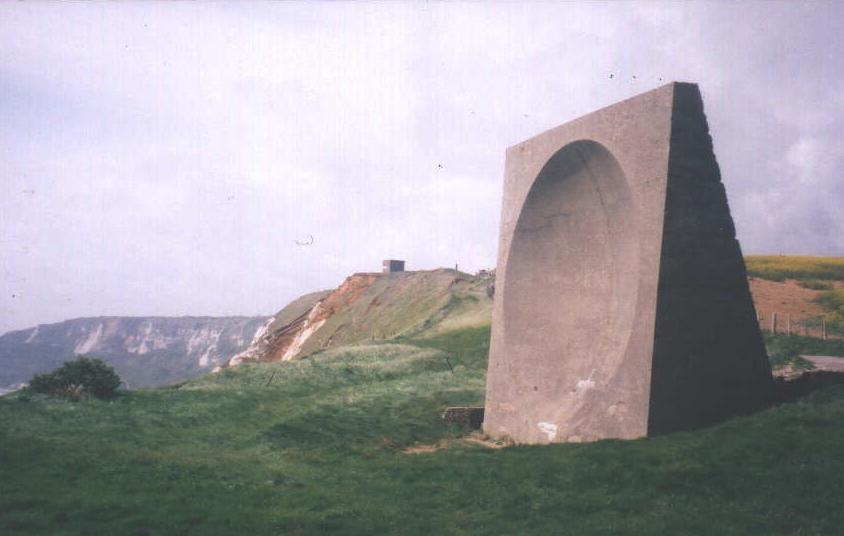
The Guardian article How to amuse yourself in a 14-hour queue at Dover suggests: “The A20 between Folkestone and Dover can be an area of breathtaking beauty, with sea views and endless greenery to distract you from your hellish conditions. Get stranded in the right place and you could go and explore the Abbot’s Cliff sound mirror, or the Samphire Hoe nature reserve.”
Covenant names new single Sound Mirrors
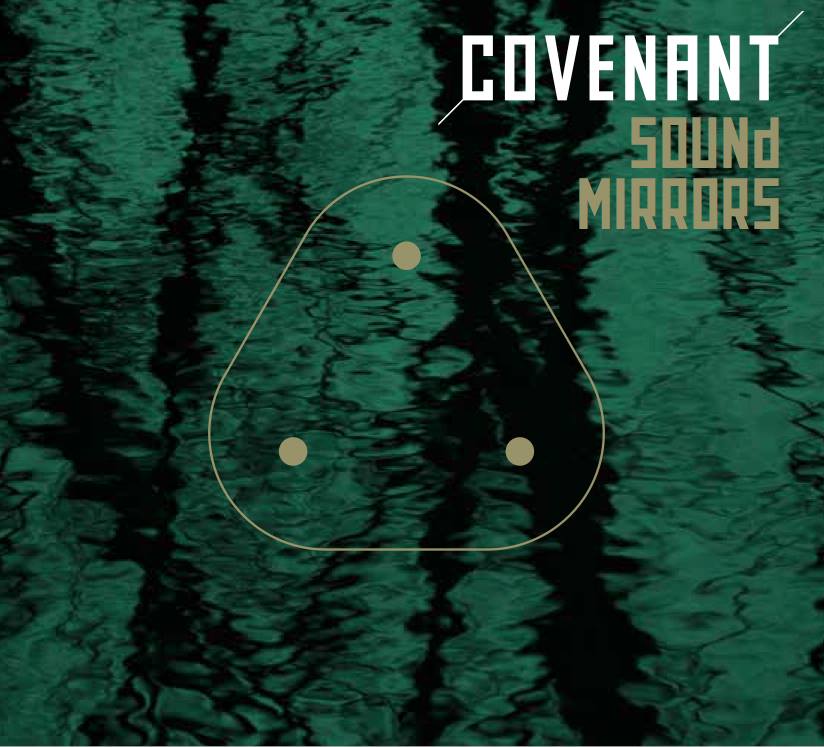
Swedish band Covenant has announced that its new single to be released on 26 August 2016 will be called ‘Sound Mirrors’. Music publisher Dependent says:
Covenant’s new single ‚Sound Mirrors’ gives us a first impression of their forthcoming album “The Blinding Dark”. For the first time ever, the Swedes address distinctly topical events in world politics: the refugee crisis with its accompanying hysteria and the anxiety about the future of a European continent that looks forward into uncertainty.
Sound Mirrors were acoustic mirrors that looked like giant stone ears, placed along the Englisch coast between 1916 and 1930 in order warn of approaching planes or war ships. Their elliptical shape bundled acoustic signals, and they were considered to be both technological and constructional masterpieces. Faster planes and especially the invention of radar made sound mirrors obsolete later on, so today, they are merely stone witnesses of bygone times along the southern and north-eastern coasts of England. The reference tot he refugee crisis and creeping radicalisation of Europe becomes particularly obvious when hearing Covenant’s lyrics for the corresponding song.
Musically, the band does not miss out on anything, delivering a club smasher that harks back to single classics such as ‚Stalker’ or ‚Last Dance’. While unusual splashes of colour enhance the overall picture, ‚Sound Mirrors’ is bound to become an enduring earworm that will soon set dancefloors aflame.
Band member Joakim Montelius wrote on the band’s Facebook page on 25 June 2016:
I was reading an article about this British pre-WWII project for early warning from attacks across the Channel, called Sound Mirrors. They were designed to amplify incoming sound from enemy aircraft enough to allow the defence to take them out before they could pose a serious threat. It was an elaborate and ingenious design, expensive as well, and it was rendered obsolete by the advent of radar.
My reading coincided with the refugee situation in Europe. The fact that we all knew about the reasons for it since years, without doing anything to help, made me think of this pattern. How we, humans in general, do everything in our power to try and predict future threats. That ability to anticipate possible scenarios is of course key to our survival, from an evolutionary point of view. [More…]

